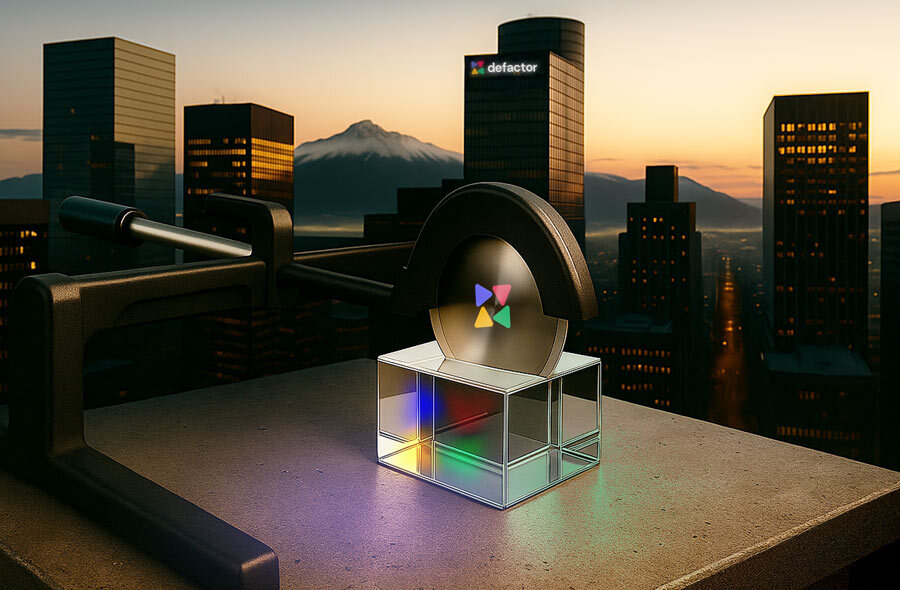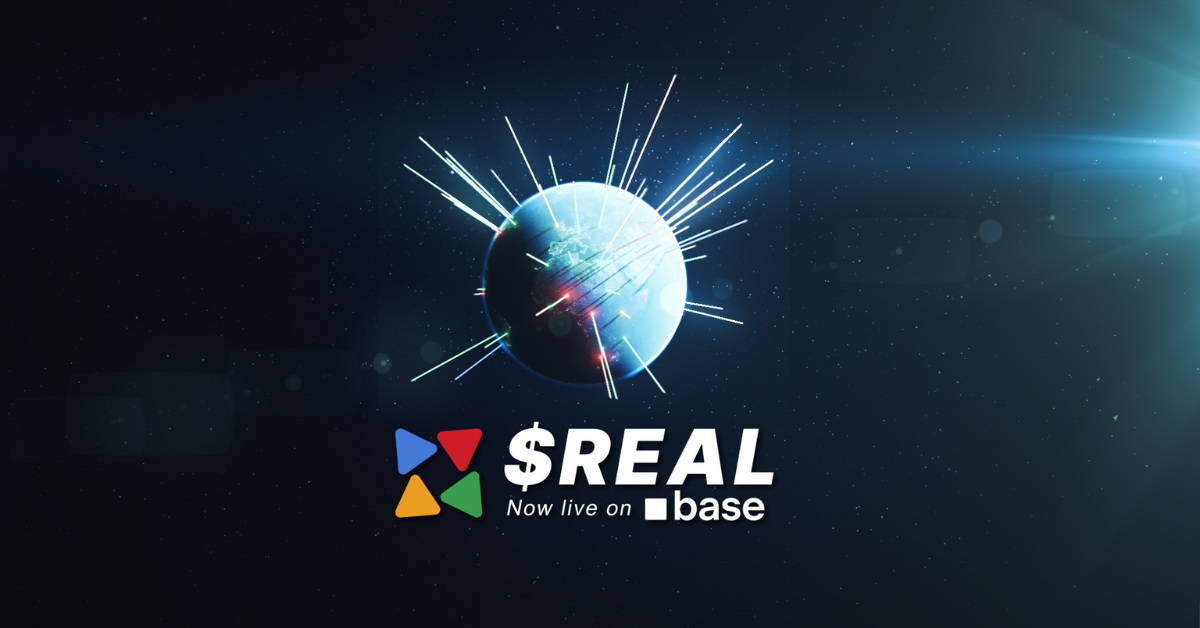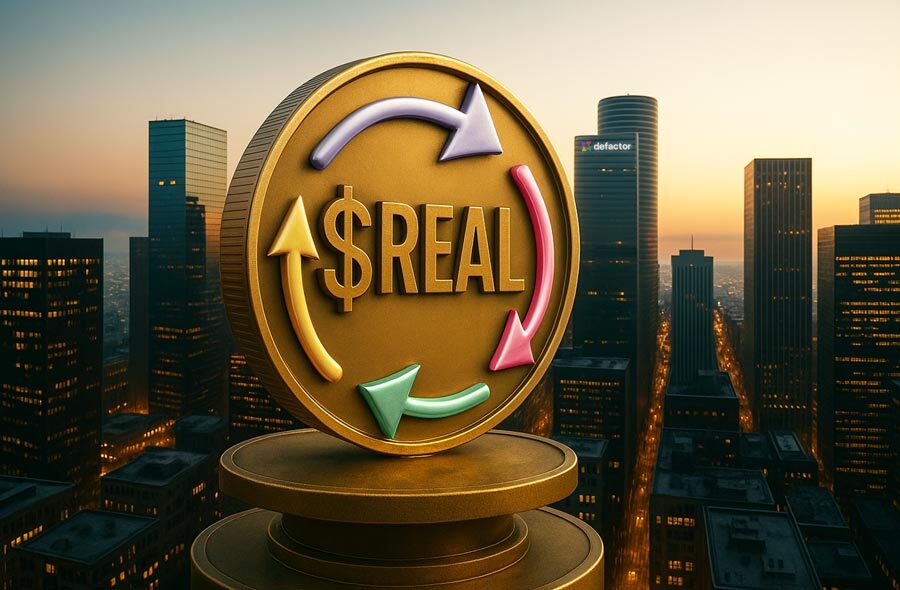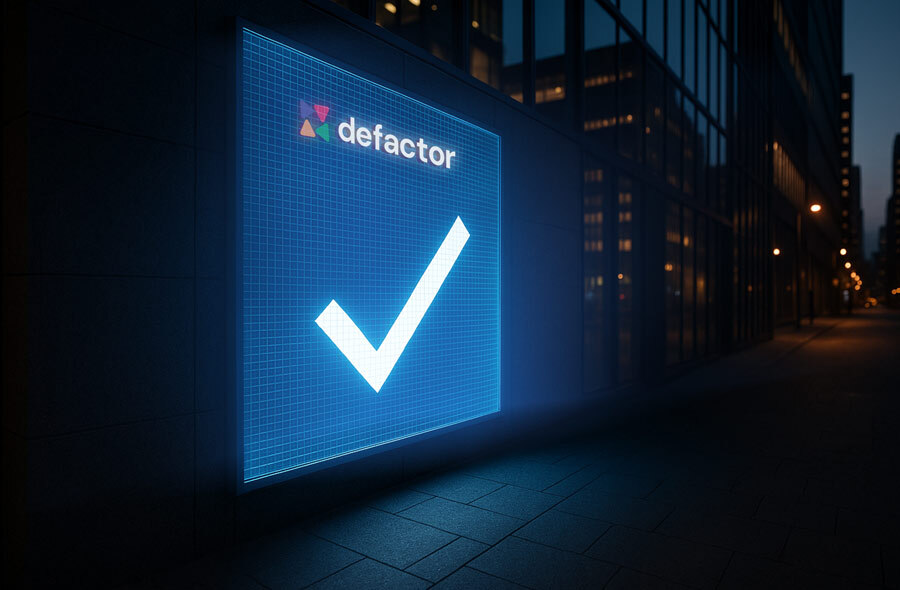The Business Pain Points We See Every Day
The nature of business is to evolve, constantly adapting to solve persistent challenges. From the adoption of EDI in the 1970s which streamlined global trade, to the rise of cloud payroll in the 2000s that eliminated back-office bottlenecks, history shows that when technology meets inefficiency, transformation follows. Just as fintech platforms opened new doors for underbanked SMEs, today’s real-world asset infrastructure is the groundwork for the next leap in business finance: liquidity, transparency, access, and efficiency at scale and it’s already underway.
Illiquid Assets
Real estate, trade receivables, invoices, equipment are all critical to operations, but typically they are locked up in static structures. Monetizing these assets is slow, if not impossible, under traditional frameworks.
Complex Compliance
Cross-border investment or asset transfers are wrapped in layers of jurisdictional red tape. Manual KYC/AML, legal reviews, and investor onboarding processes add cost and slow down deals.
High Capital Costs
Financing is especially difficult for SMEs. Banks demand collateral, underwriting is conservative, and traditional factoring or lending options come with high fees or delays.
Operational Inefficiency
Managing multiple systems for asset records, investor communication, risk tracking, and payments is disjointed. For platforms or fintechs, building this infrastructure from scratch is time- and resource-intensive.
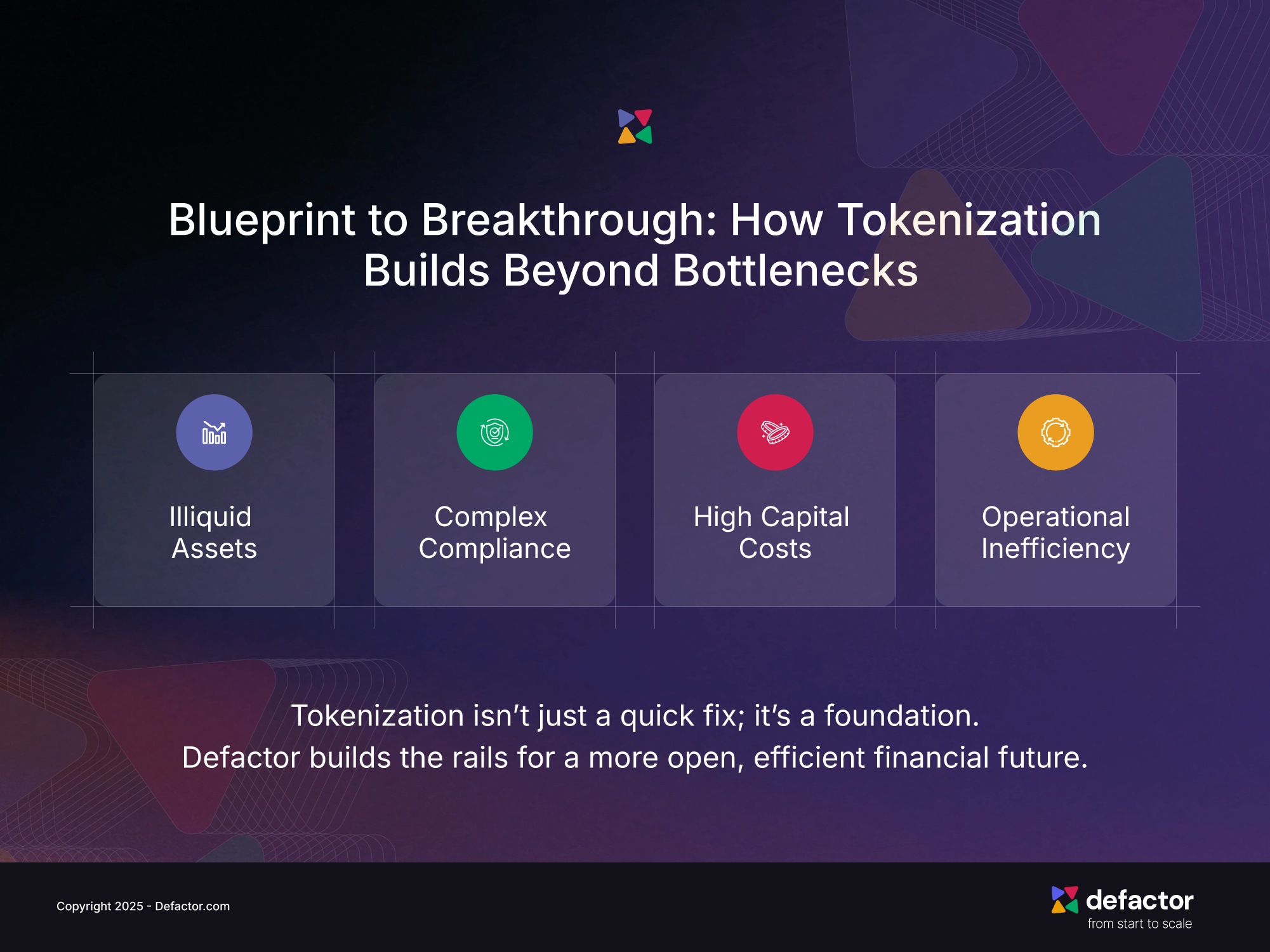
Tokenization’s Role in Modern Business
Tokenization gives businesses the ability to unlock the latent value of their real-world assets by converting them into secure, interoperable digital tokens that can then be deployed across DeFi ecosystems. With Defactor’s toolkit, companies can transform tangible and intangible assets into verifiable on-chain tokens. These tokens act as digital twins of real-world value, bringing unprecedented liquidity, transparency, access, and efficiency to traditional assets.
For businesses, tokenization means unlocking liquidity from assets that were once tied up or undervalued, making it easier to access capital on their own terms. With tokenization, transparency is built-in and verifiable by asset data, companies can build trust with investors and lenders faster than ever before. Toolkits allow access to a wider, more inclusive financial ecosystem, where even SMEs in emerging markets can participate, regardless of location or credit barriers. Integrating tokenized assets into permissioned lending pools, improves operational efficiency, trust-minimized borrowing and lending, all backed by programmable compliance and real-time risk assessment.
Beyond capital access is the integration of staking and governance features that align incentives and build trust within the ecosystem. Businesses can allow token holders to stake tokens, which creates customers with skin in the game that can act as a community through governance. Not only does this eliminate hours of marketing effort, customer panels and surveys by simply asking the customer “What do you want?” but it acts to enhance credibility and visibility, which can improve partnership opportunities.
Governance rights provided to token stakers allow these businesses to hear their customers' voices in critical decisions, giving them agency in shaping the very infrastructure they use. Tokenization isn’t just another flashy innovation, it’s more of an infrastructure upgrade in plain clothes. It doesn’t shout, but it quietly rewires the system, creating something sturdier, something built to hold when the old scaffolding starts to give way. Defactors toolkit is not loud, but it lasts, as a foundation for a more resilient financial future.
RWA Tokenization: More Than Just a Trend
Far from being a passing trend; it's a change in how businesses access value, connect with capital, and operate on a global scale that is having tens of billions of dollars of impact in the real-world at this very moment. When assets are digital the right tools make the benefits real.
Toolkits make it possible to unlock liquidity from assets that were once stuck in long-term contracts or held in off-chain silos. Whether it’s real estate, precious metals, or intellectual property, businesses can create tokenized versions that give holders the ability to borrow, lend, or exchange without selling the underlying asset. It’s a powerful way to mobilize value without sacrificing ownership.
Tokenization also brings transparency to the forefront. By putting asset history, performance data, and risk exposure directly on-chain, a toolkit helps businesses demonstrate credibility to investors and regulators alike. Through real-time dashboards and auditable smart contracts, stakeholders gain access to trustworthy, verifiable insights.
It also expands accessibility by opening up participation to communities, contributors, and investors who were previously excluded. With the ability to mint and manage tokens in flexible formats businesses can offer shared ownership models and reach a wider, more global audience.
Finally, a toolkit enhances efficiency. Manual compliance checks, investor onboarding, and operational workflows are replaced by programmable logic and automated smart contracts. This means faster launches, fewer intermediaries, and scalable infrastructure, all without needing to build from scratch.
RWA tokenization works best when the foundation is strong. That’s why an effective toolkit doesn’t just digitize assets, it supports every stage of the journey from start to scale: minting, managing, engaging communities,enabling financial participation, simply, acting a full-stack approach to modern finance.
What Makes Defactor Different?
Enduring structures begin with solid foundations. and at Defactor, we’ve spent years building just that. Working with asset originators, fintechs, and institutional partners to understand what real-world tokenization actually requires. Our Toolkit was built with those realities in mind.
Here’s what it offers:
Asset Onboarding & Compliance Framework
From KYC to legal verification and risk scoring, our toolkit ensures that only compliant, verified assets enter the ecosystem
Permissioned Smart Contracts
We use open standards like ERC-3643 and ERC-7518, allowing issuers to tokenize with embedded compliance and transfer restrictions.
Investor and Wallet Management
Built-in tools for onboarding investors, managing wallets, tracking activity, and handling redemptions so platforms can focus on growth, not infrastructure.
Modular API Integrations
White-label ready, API-accessible, and adaptable to your platform whether you’re building a tokenized debt marketplace, a real estate investment app, or a private credit network.
Why It Matters
Defactors toolkit is more than just software, it’s a practical gateway to a more efficient financial system. In the landscape of DeFi, credibility is everything. That’s why our toolkit has been adopted by forward-thinking platforms across industries to bridge real-world assets with decentralized finance finance.
Trade finance platforms are using our toolkit to tokenize future crop yields, allowing producers to access loans backed by their expected output. Real estate issuers are unlocking fractional ownership by tokenizing properties and enabling investors to borrow against their holding. Meanwhile, financial firms are bringing traditionally offline assets on-chain through regulated tokenized bonds, creating new credit pathways and building trust in historically underserved markets.
In each case, Defactor empowers these businesses to mint and manage tokens, engage their stakeholders, and provide open finance opportunities, securely, scalably, and without needing to rebuild the wheel. This is what tokenization looks like when it’s done right: usable, verifiable, and ready not just for the digital world, but for the real world.
Key Takeaways
- Tokenization unlocks liquidity from underutilized real-world assets
- Defactor’s toolkit brings built-in transparency through auditable on-chain data and smart contracts
- Tokenization empowers community governance and engagement, turning stakeholders into contributors
- With Defactor, businesses gain full-stack infrastructure for modern finance, from start to scale
